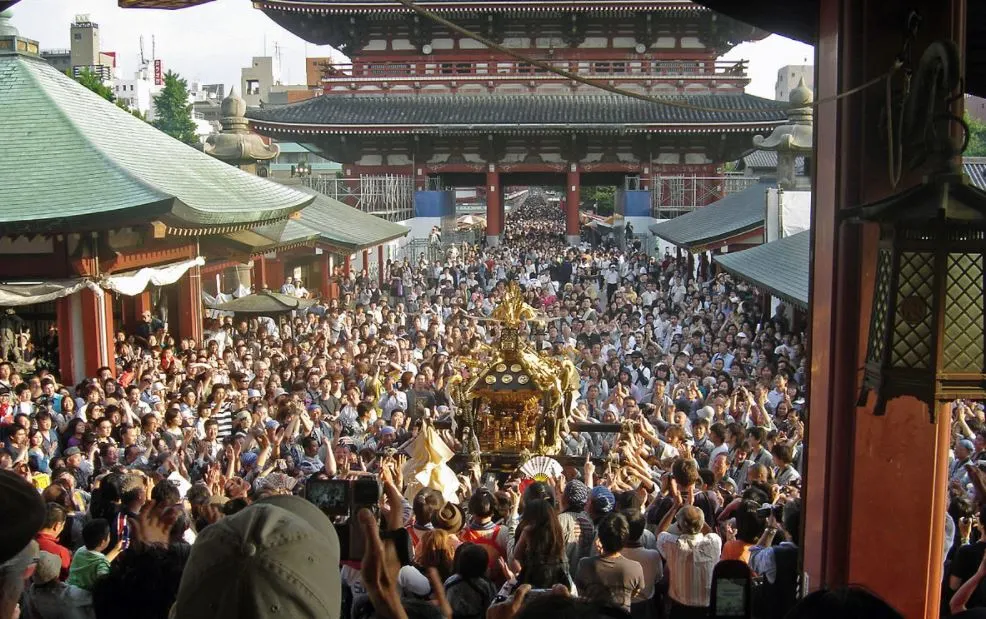One of the must-see buildings in Tokyo is an ancient Temple that was originally founded in the 7th century. It eventually ended up becoming one of the most popular spiritual attractions in the world.
In this article, you can discover the ultimate list of interesting facts about the Sensoji Temple, one of the most famous Buddhist temples in the world!
1. It’s located just northeast of Tokyo’s historical center
The Sensoji Temple, also known as “Sensō-Ji,” is a Buddhist temple near the center of Tokyo Japan. It’s situated in the Asakusa district in the Taitō neighborhood of Japan’s capital.
This means that the temple is located just a few kilometers to the northeast of Tokyo’s historical center, on the left bank of the Sumida River.
The street approaching the temples is called the Nakamise-dōri and dates back to the 18th century. It has been occupied by shops ever since, even though most of the original ones were destroyed by an earthquake in 1923.
The rebuilt stores were destroyed yet again during WWII which means that the current ones, which sell all sorts of souvenirs, date back from shortly after World War II.

2. It was dedicated to a bodhisattva for a particular reason
The temple was dedicated to Kannon Bosatsu, the Bodhisattva of compassion and mercy. The story about this is that two fishermen pulled up a statue of this Bodhisattva from the Sumida River in the year 628 A.D.
Stunned by their discovery, they enshrined the statue in the fisherman’s house. This quickly became a pilgrimage for the local village members and all of the villages in the area.
Because of this popularity, a temple was built shortly after on the location of the temple today.

3. It’s the oldest and most important Buddhist temple in Tokyo

The original temple on the site was completed in the year 645 A.D., which makes it the oldest temple in all of Tokyo. Because of its significance in Tokyo’s history, it’s also considered to be the most important one.
For most of its history, the temple has been associated with the Tendai sect of Buddhism, a school of Buddhism established in the year 806 A.D in Japan. Today, the temple is considered to be an independent structure.
One of the most astounding facts about the Sensoji Temple is that it’s considered the most-visited spiritual site globally with over 30 million annual visitors!
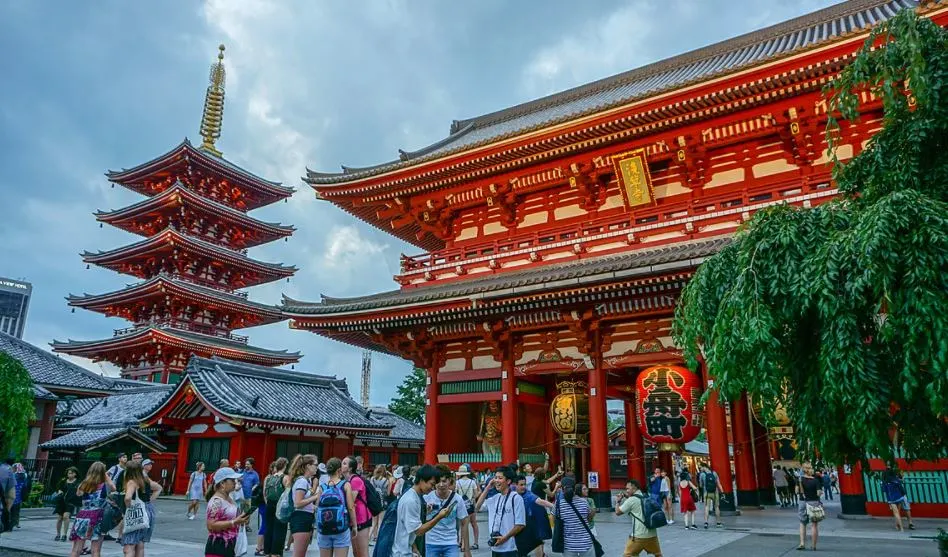
4. The temple was destroyed in WWII and rebuilt
Just like the shops in the street leading up to the temple, the version of the temple pre-dating World War II didn’t make it and was completely ruined during a severe air raid on Tokyo. This unfortunate event happened on the night of March 9 and 10, 1945.
The temple was rebuilt and is now seen as a symbol of rebirth and peace for the Japanese people. This is especially emphasized by a tree inside the temple’s courtyard that was hit during the bombing in 1945 and which has regrown inside the old tree.

5. The main entrance is referred to as the “Thunder Gate”
The temple consists of two gates and the outer gate, which allows visitors to enter the street lined with shops, is called the “Kaminarimon,” or “Thunder Gate.”
The original gate dates back to the year 911 A.D. and was located just nearby until another gate was built in its current location in 1635. It burned down multiple times during its history and ended up being destroyed again during WWII.
The current gate was dedicated in December of the year 1960. When you pass through this gate, you must definitely look up as you’ll see a giant red lantern that weighs 700 kilograms (1,500 lbs) and features a wooden carving of a dragon.
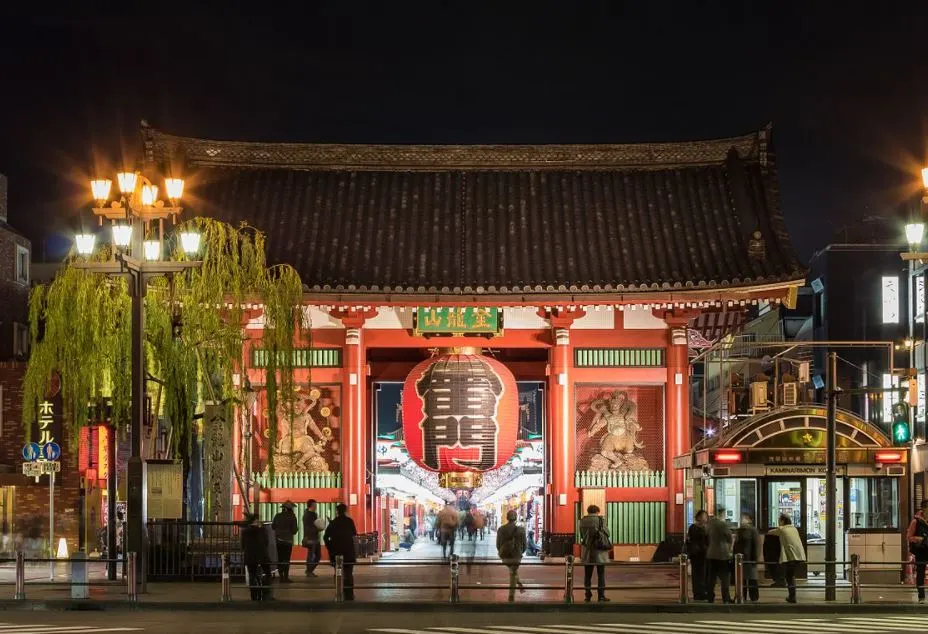
6. The thunder gate features statues carved by a 106-year old sculptor
This giant red lantern isn’t the only interesting feature of the Thunder Gate as it also features a total of 4 statues. You’ll find statues of the Shinto gods Fūjin on the east (the god of wind) and Raijin on the west (the god of thunder) on the front of the gate.
One of the most amazing facts about the Sensoji Temple is that the backside of this gate features two wooden statues of Buddhist gods Tenryū on the east, and the goddess Kinryū on the west.
These two statues were carved by one of the most famous sculptors in Japanese history named Hirakushi Denchū (1872-1979). The man was 106 years old and donated the sculptures in honor of the 1350th anniversary of the appearance of Kannon, the bodhisattva to whom the temple was dedicated.
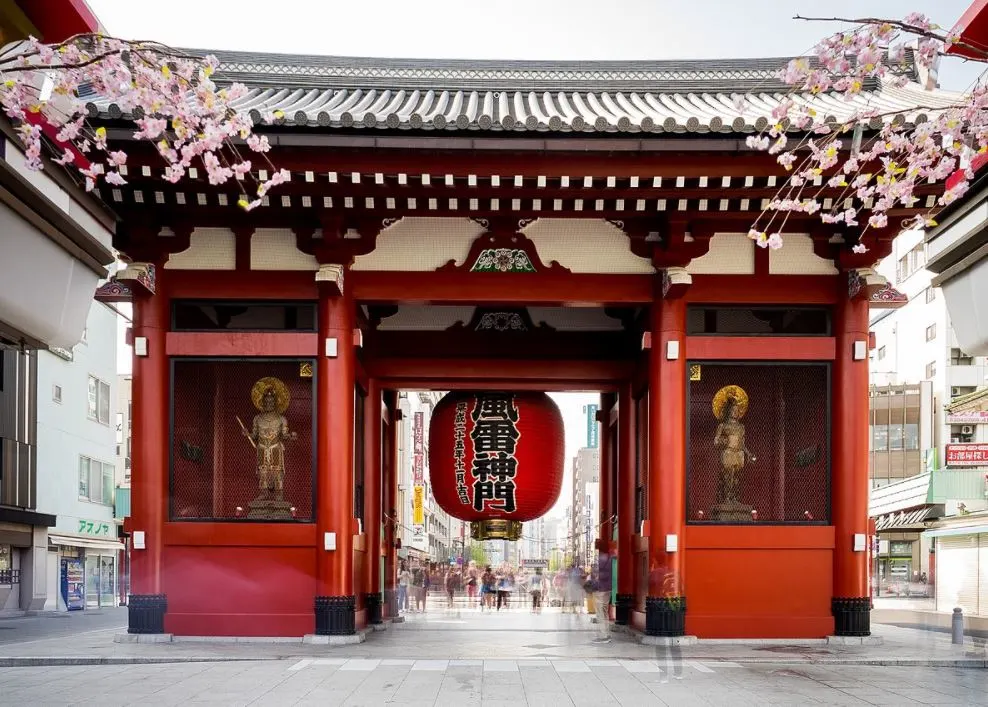
7. The second gate is called the “Treasure House Gate”
The second gate is located inside the temple complex and leads up to the Asakusa Shinto shrine. This two-story gate is called the “Hōzōmon.” The structure is much larger than the outer gate as it stands 22.7 meters (74 feet), has a width of 21 meters (69 feet), and has a depth of 8 meters (26 feet).
The history of this gate is pretty similar to that of the other gate as it was originally built in the 10th century in the year 942 A.D. It was destroyed by fires multiple times and ended up being flattened during World War II as well.
The current steel-reinforced concrete structure was rebuilt in the year 1964 and the second story houses several interesting treasures, including important Buddhist scriptures including a copy of the Lotus Sutra.
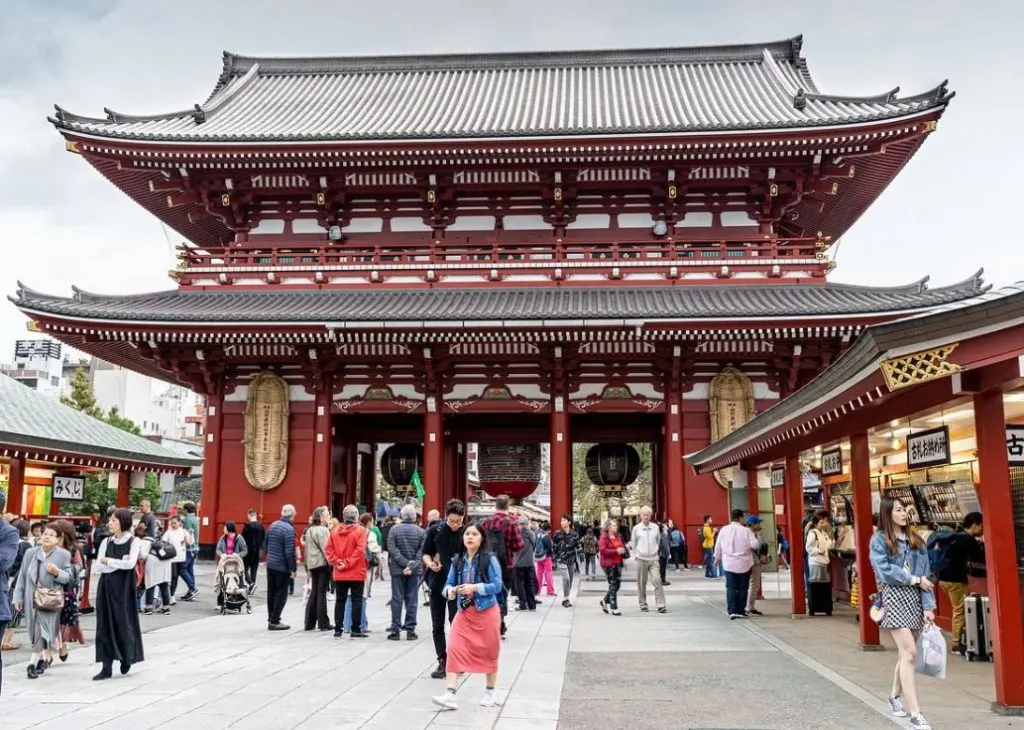
8. The Treasure House Gate is guarded by 2 angry wooden guards
The Treasure House Gate is protected by two angry-looking wooden sculptures that each stand 5.45 meters (17.88 feet) tall. These are the so-called Niō, the protection gods of the Buddha.
That’s why this gate was originally referred to as the “Niōmon” as well, in honor of the guardian deities of the Buddha. Both these statues are located on the south face of the gate and permanently protect the treasures located in both the gate itself and the Sensoji Temple complex.
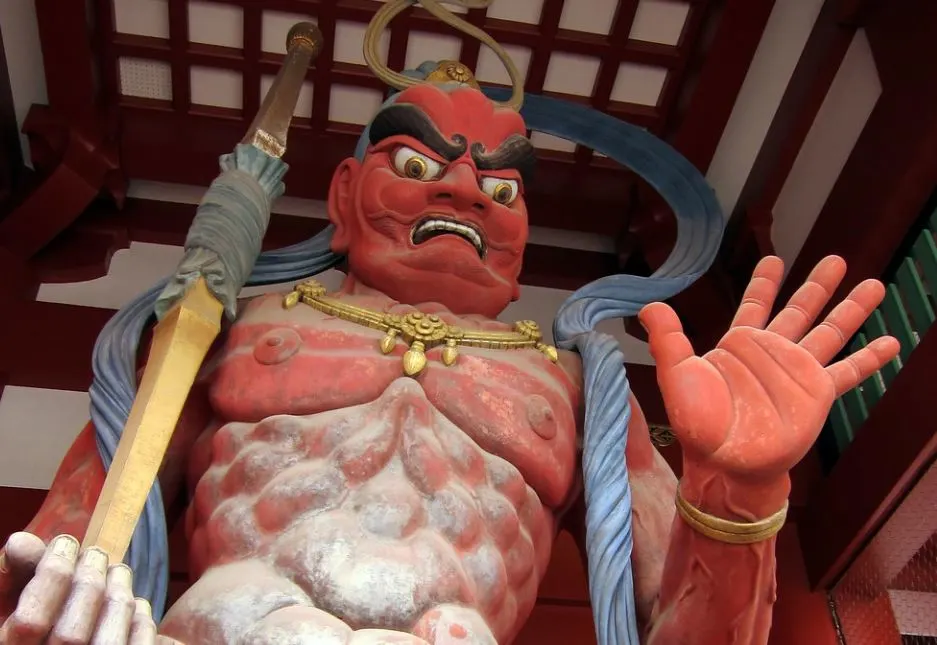
9. Important life questions are answered for just 100 yen
One of the most popular tourist attractions in Tokyo is bound to be one of the best places to start a lucrative business. That’s the case as you won’t just find shops selling souvenirs here but also so-called o-mikuji stalls.
Here you can have one of your most important questions in life answered for a meager 100 yen. The oracle will answer your question upon completion of your payment by releasing a strip of paper.
Yes, these are pretty much fortune cookie answers coming out of a wall!

10. It’s the centerpiece of the most popular festival in Tokyo
The most popular festival in the enormous city of Tokyo is called “Sanja Matsuri” or the “Sanja Festival.” This festival is held in honor of the 3 men who originally founded the Sensoji Temple named Hinokuma Hamanari, Hinokuma Takenari, and Hajino Nakatomo.
This also means that the temple becomes the main focal point of all of Tokyo, resulting in extremely large crowds gathering both inside the temple complex and in the streets just outside of it.
Unless you somehow enjoy being trampled by thousands of people, this is perhaps not the best time of the year (the third weekend of May) to enjoy this magnificent landmark in the center of Tokyo, right?
